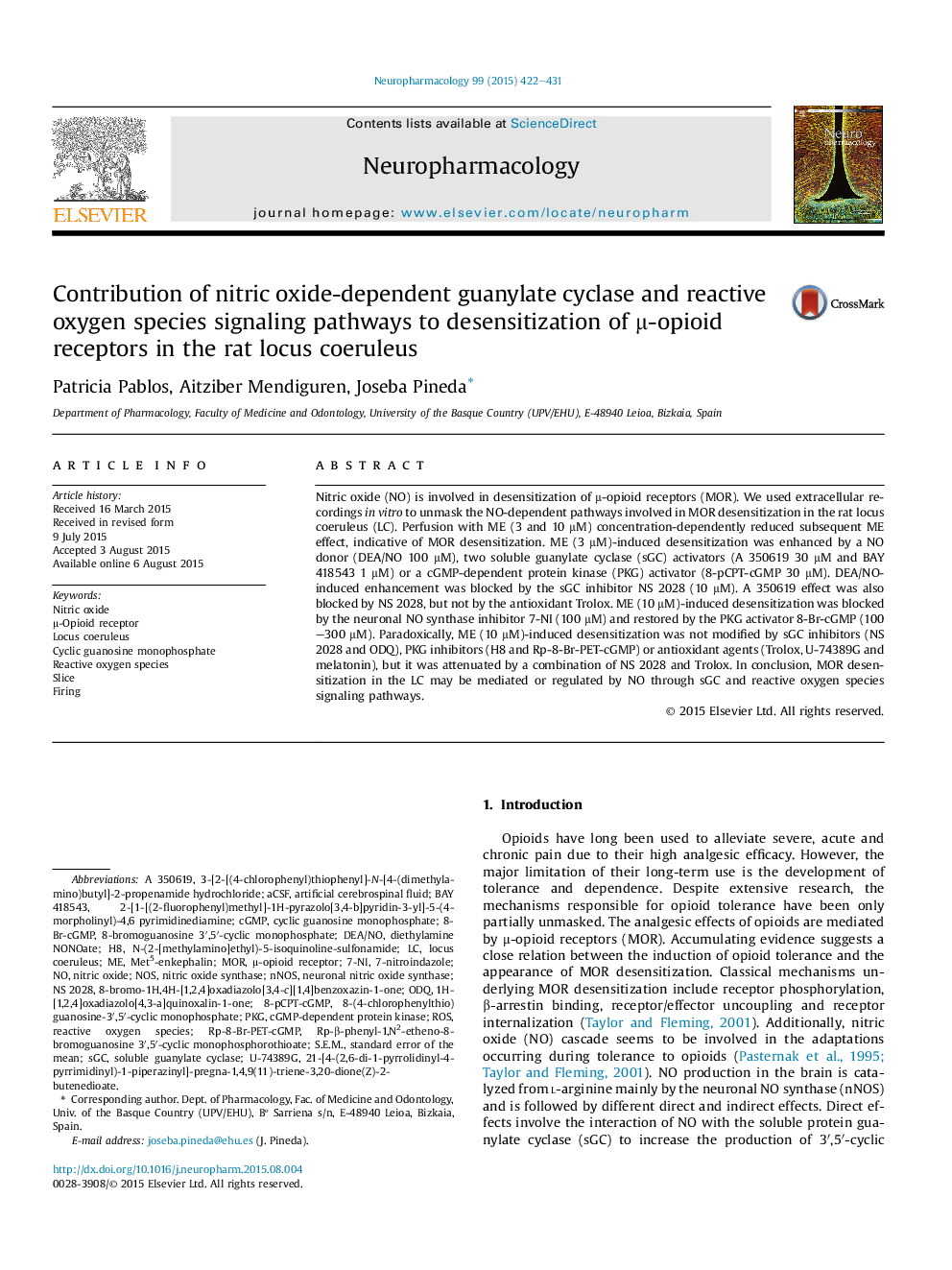| کد مقاله | کد نشریه | سال انتشار | مقاله انگلیسی | نسخه تمام متن |
|---|---|---|---|---|
| 5813815 | 1556616 | 2015 | 10 صفحه PDF | دانلود رایگان |
عنوان انگلیسی مقاله ISI
Contribution of nitric oxide-dependent guanylate cyclase and reactive oxygen species signaling pathways to desensitization of μ-opioid receptors in the rat locus coeruleus
دانلود مقاله + سفارش ترجمه
دانلود مقاله ISI انگلیسی
رایگان برای ایرانیان
کلمات کلیدی
ODQPKG7-NI8-Br-cGMPSGCU-74389GnNOSaCSFS.E.M.Met5-enkephalinNOScGMP8-bromoguanosine 3′,5′-cyclic monophosphateMOR8-pCPT-cGMP1H-[1,2,4]oxadiazolo[4,3-a]quinoxalin-1-one - 1H- [1،2،4] اکسیدیاازولو [4،3-a] کینوکسالین-1-یون7-nitroindazole - 7-نیتریدازولDEA/NO - DEA / NOROS - ROSμ-Opioid receptor - μ-گیرنده اپیوئیدSlice - تکهstandard error of the mean - خطای استاندارد میانگینdiethylamine NONOate - دی اتیلامین نئوneuronal nitric oxide synthase - سنتاز اکسید نیتریک عصبیSoluble guanylate cyclase - سیکلاس گوانیلات حل کنندهlocus coeruleus - لوکوس سیرولئوسartificial cerebrospinal fluid - مایع مغزی نخاعی مصنوعیcyclic guanosine monophosphate - مونوفسفات گوانوزین چرخه ایNitric oxide - نیتریک اکسیدnitric oxide synthase - نیتریک اکسید سنتازcGMP-dependent protein kinase - پروتئین کیناز وابسته به cGMPFiring - کشتنReactive oxygen species - گونههای فعال اکسیژن
موضوعات مرتبط
علوم زیستی و بیوفناوری
علم عصب شناسی
علوم اعصاب رفتاری
پیش نمایش صفحه اول مقاله

چکیده انگلیسی
Nitric oxide (NO) is involved in desensitization of μ-opioid receptors (MOR). We used extracellular recordings in vitro to unmask the NO-dependent pathways involved in MOR desensitization in the rat locus coeruleus (LC). Perfusion with ME (3 and 10 μM) concentration-dependently reduced subsequent ME effect, indicative of MOR desensitization. ME (3 μM)-induced desensitization was enhanced by a NO donor (DEA/NO 100 μM), two soluble guanylate cyclase (sGC) activators (A 350619 30 μM and BAY 418543 1 μM) or a cGMP-dependent protein kinase (PKG) activator (8-pCPT-cGMP 30 μM). DEA/NO-induced enhancement was blocked by the sGC inhibitor NS 2028 (10 μM). A 350619 effect was also blocked by NS 2028, but not by the antioxidant Trolox. ME (10 μM)-induced desensitization was blocked by the neuronal NO synthase inhibitor 7-NI (100 μM) and restored by the PKG activator 8-Br-cGMP (100-300 μM). Paradoxically, ME (10 μM)-induced desensitization was not modified by sGC inhibitors (NS 2028 and ODQ), PKG inhibitors (H8 and Rp-8-Br-PET-cGMP) or antioxidant agents (Trolox, U-74389G and melatonin), but it was attenuated by a combination of NS 2028 and Trolox. In conclusion, MOR desensitization in the LC may be mediated or regulated by NO through sGC and reactive oxygen species signaling pathways.
ناشر
Database: Elsevier - ScienceDirect (ساینس دایرکت)
Journal: Neuropharmacology - Volume 99, December 2015, Pages 422-431
Journal: Neuropharmacology - Volume 99, December 2015, Pages 422-431
نویسندگان
Patricia Pablos, Aitziber Mendiguren, Joseba Pineda,